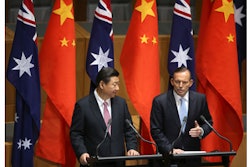
Using free trade agreements (FTAs)—minimizing duties—is one of the fastest and easiest ways to squeeze significant savings out of a company’s global supply chain. Money saved goes directly to a company’s bottom line. Taking advantage of an FTA has numerous advantages, including:
- reducing landed cost
- creating price advantages for international sales
- improving access to foreign markets
- lowering cost of purchasing raw materials and less expensive procurement options
- enabling leaner manufacturing options and lower production costs
- reducing or eliminating duties and taxes
Yet many companies forego these benefits because of the perceived effort to administer them. Companies face several challenges to using an FTA:
- The time involved to manually qualify for and administer an FTA
- The complexity of determining eligibility of goods, tracking information such as country of origin, as well as special program or trade program indicators
- Creating tools, documentation and a system to obtain parts information from suppliers and collaborate with them to improve data accuracy and timeliness
- Collecting the duty savings “post transformation” by qualifying each saleable good against the country’s rules of origin
- Fear of noncompliance, which can lead to fines and other penalties
These concerns are not unfounded. Many companies have few internal staff available to manage these agreements. In a survey of more than 360 respondents, Amber Road found that 48 percent had a compliance team comprised of two to five individuals and a further 20 percent had very small or non-existent compliance teams. At the same time, 42 percent of respondents operated in more than 20 countries worldwide.
Using automation, however, can help with these issues. Trade agreement automation includes functions such as product classification; campaign management to solicit suppliers by trade agreement; a supplier solicitation portal; managing rule of origin content for each trade agreement and integrating bills of materials with a qualification engine.
Some of the benefits of automating the FTA process include reducing manually intensive processes; ensuring adherence to compliance regulations; automating and centralizing the process for obtaining origin information; developing repeatable structures and processes, allowing qualification of goods for multiple trade agreements; streamlining the FTA process; and managing numerous certificates along with their revisions and renewals.
Other key parts of a solid FTA program include:
- A supplier management program to consistently obtain information from suppliers, such as certificates of origin and trade program certifications, to support a preferential status claim. The program should have an established communication protocol; clearly explain the reason and benefits of the program; and include training on your systemized response mechanism and format.
- Multi-sourcing data visibility to understand where each part came from, as a single part could be sourced from different countries. You will need to keep separate information for each part and individual supplier to make sure the part is eligible for FTA.
- Solicitation campaign management that supports high volumes of supplier solicitations, rules of origin content information, analysis and certifications. Your campaign management process should allow you to target the correct suppliers; request only what is relevant; streamline the response process; and check and validate responses.
Haworth, a family owned, privately held company headquartered in Holland, Mich., is one company that is seeing significant cost savings by using automation to take advantage of NAFTA.
A $1.4 billion office furniture, adaptable workspaces and architectural interiors provider, Haworth has markets in more than 120 countries with over 600 dealers worldwide. About 85 percent of its exports, representing approximately $200 million in annual revenues, are within the NAFTA region.
To qualify its goods for NAFTA, Haworth needed to solicit more than 1,000 suppliers worldwide for NAFTA certification data for more than 43,000 purchased parts. The process, outsourced to a third-party service provider, required NAFTA analysis to be managed separately, with results manually uploaded into the export documentation system. Paper NAFTA certificates then were created and distributed daily via courier to brokers and customers.
With manual and paper processes, Haworth was only able to qualify about 50 percent of its 16,000-plus export products. Nearly 1,000 new parts each month needed to be analyzed for NAFTA qualification, which quickly overwhelmed the process.
Technology allows Haworth to pull data from order management, warehouse management and ERP systems into a global trade database. A supplier web portal automates the solicitation and management of qualification data from suppliers.
As a result, Haworth saved $1.2 million in duties and taxes from preferential treatment; improved its supplier solicitation response rate by 80 percent; achieved annual cost savings of $225,000; streamlined its NAFTA qualification process and enabled compliant record keeping; and increased regulatory compliance through real-time screening updates. Further, the company eliminated outsourcing, paper, fax and courier charges and can manage larger volumes of transactions with no additional personnel.
The time it takes Haworth to determine NAFTA eligibility for a part has decreased dramatically, from at least 10 minutes for a single part to over 16,000 export parts in less than eight minutes. Supplier response rates more than doubled, enabling more than 96 percent of Haworth’s North American exports to qualify for NAFTA and receive preferential duty treatment.
Conclusion
In Amber Road’s trade agreement benchmark survey, 41 percent of respondents reported that, on average, they could reduce duties by more than $500,000 per trade agreement and 27 percent said that their savings opportunity was more than $1 million per trade agreement.
Yet, due to headcount constraints or the cost of outsourcing, many organizations only focus on one or two agreements—if they use any.
A big benefit of creating an automated, repeatable FTA process is that it can be used as a base for rapidly supporting other trade agreements. And with more than 300 FTAs enacted worldwide, often the only primary difference between FTAs is the rule of origin content. Bill of material information and supporting business data can be fully reused, and that data can be easily accessed and used if available in a database. Repurposing data for other FTAs allows companies to extend the qualification process across a number of FTAs with a declining margin cost per agreement. Moreover, by using automation companies can improve their FTA coverage for eligible products between 20 and 50 percent and reduce duties to between two to three percent, with additional duty savings achieved by improving FTA coverage.












